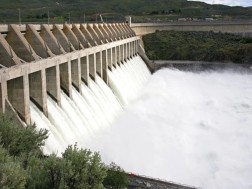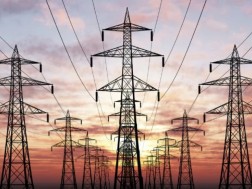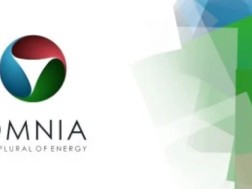Energy advisory company OMNIA published the Electricity Market Report for December , 2023. According to the document, the Ministry of Economy and Sustainable Development conducted a second power generation auction in Georgia, offering a total installed capacity of 800 MW, which is nearly three times that of the first auction. This auction encompassed various categories:
- Hydroelectric power stations (Reservoir) - 300 MW, Hydroelectric power stations (RoR) - 100 MW, Wind power plants - 125 MW, Solar power plants - 125 MW, Wind power plants (with energy-saving devices) - 70 MW, Solar power plants (with energy-storage devices) - 70 MW, Power plants working on other renewable energy sources - 10 MW. The auction will be closed on February 12, 2023.
The first auction attracted significant private sector interest, resulting in 27 winning companies with $400 million of investments in energy projects.
Energy Balance
Renewable energy's share in Georgia's power generation has remained high over the last 12 months. During this period, Georgia produced 10948.6 GWh of hydro and wind energy, along with 3446.5 GWh of thermal energy. Renewable energy accounted for 76.1% of the country's total power generation.
In terms of cross-border trade, Georgia remained a net exporter. The country imported 789.9 GWh of energy but exported 1,468.4 GWh, resulting in a net exchange of 678.5 GWh. Georgia exported 4.71% of its total domestic energy generation in the past twelve-month period.
Balancing Energy
The share of balancing energy in the power trade balance over the last twelve months averaged around 16.9% and reached 2491.9 GWh during the period starting from January 2023.
The average weighted price for balancing energy during this period was 139.3 GEL/MWh. It reached a maximum of 150.0 GEL/MWh in October 2023, and a minimum of 85.2 GEL/MWh in May 2023.
The share of PPA producers in the total amount of balancing energy over the last twelve months was about 94.8 %. The share of RES PPAs was 62.4 %, while the share of thermal PPAs was 32.4 %.
Energy Balance
In December 2023, the total domestic energy generation amounted to 1166.5 GWh, which exceeded the forecast by 162.5 GWh or 16.2%.
Actual net consumption in December 2023 was 1217.9 GWh, falling short of the planned amount by 110.2 GWh or 8.3%.
Renewable energy sources (RES) generated 788.2 GWh, surpassing the plan by 236.4 GWh or 42.8%. Meanwhile, thermal generation
produced 378.2 GWh, falling short of the plan by 74.0 GWh or 16.4%.
It is worth noting that in December 2023, Georgia had planned 382.7 GWh of imports. However, its cross-border net exchange was equal to 108.2 GWh, which mainly, or 107.5 GWh, was imported to cover part of the power consumption of Abkhazia as it was in November 2023. Out of a total of 378.2 GWh of thermal power generated, GGCT-2 contributed 155.4 GWh. The other three TPPs–namely CCGT 1, Unit 9, and GPower–generated respectively 175.84 GWh, 36.08 GWh, and 10.90 GWh in December 2023.
91.12% of the total energy consumed in Georgia was generated locally, with domestic generation consisting of 67.6% from RES sources and 32.4% from thermal power plants using natural gas.
Hourly balance
All of the power generated in Georgia was consumed domestically. Power imported to Georgia covered part of Abkhazia consumption along with Enguri and Vardnili generation. The rest of the cross- border exchange took place to facilitate the transit of the power. The diagrams display the hourly volumes of system consumption and net cross-border exchange.
Balancing energy
In December 2023, the total volume of balancing energy reached 304.2 GWh, constituting approximately 28.7% of the total net traded power for the month. This represents a 8.5% decrease compared to December 2022 and an 11.8% increase compared to the twelve-month average.
Renewable energy sources contributed 50.5% to the total balancing energy generated in December 2023. The price of balancing energy for December 2023 was 146.56 GEL/MWh, with deregulated power plants receiving 120.17 GEL/MWh.
Compared to December of the previous year, the balancing energy price in December 2023 was 1.8 GEL/MWh lower, reflecting a 1.2% decrease. This slight variation can be attributed to factors such as the sources of the balancing energy and exchange rate fluctuations, both of which impact the balancing energy price. It is important to note that Power Purchase Agreement (PPA) producer prices are determined in foreign exchange.























